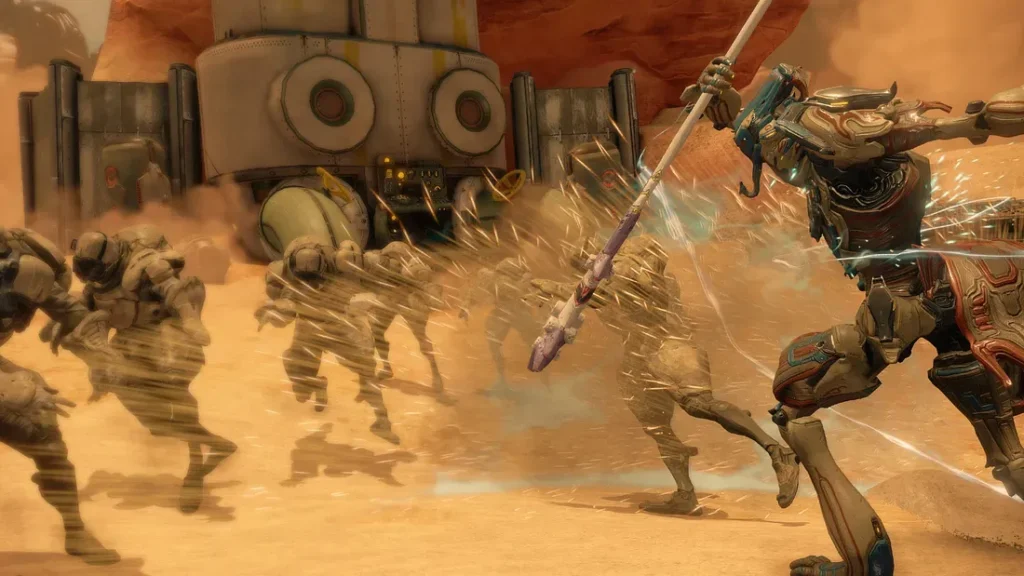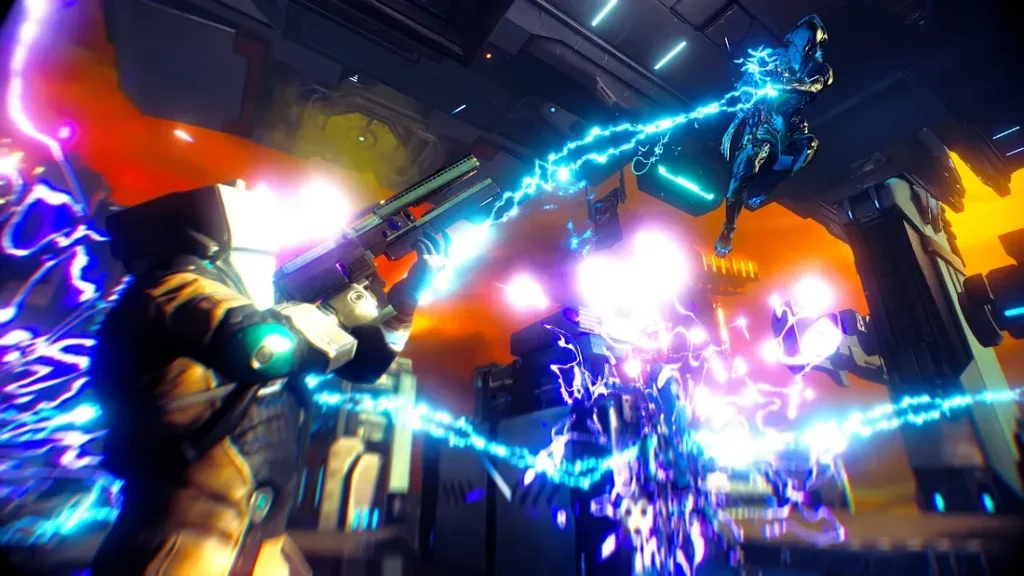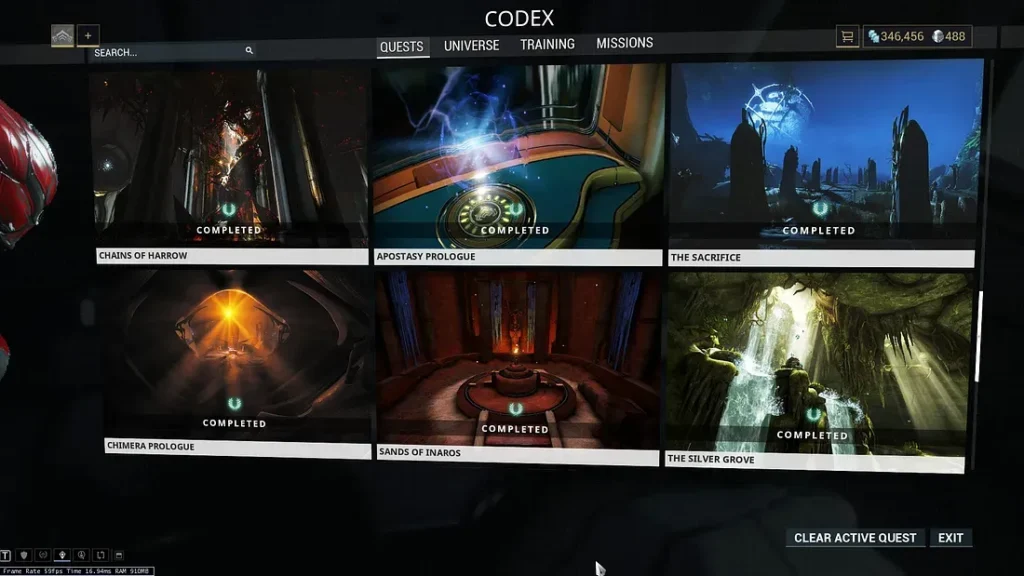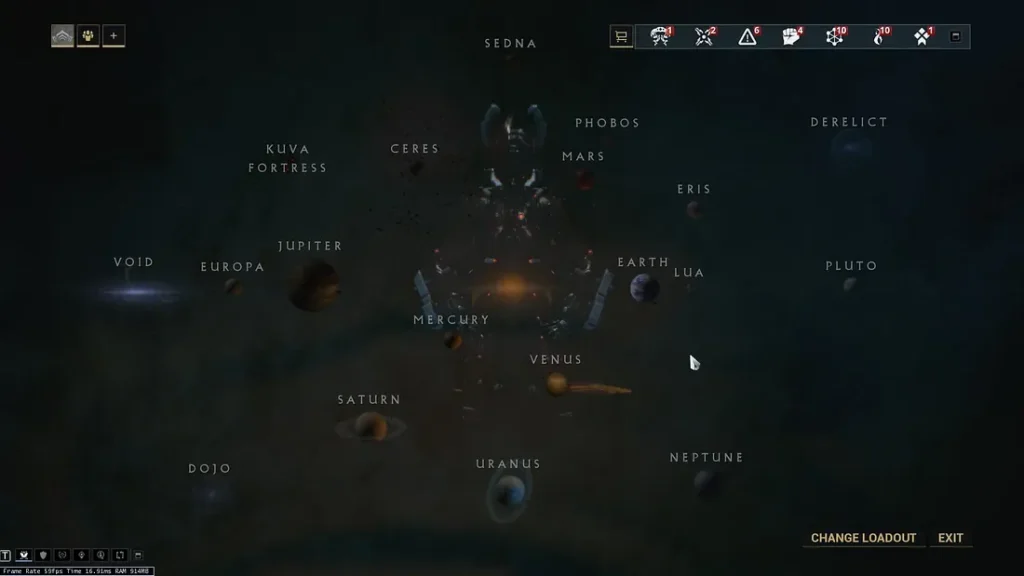Sadly, it’s buried beneath hundreds of hours of gameplay

Note: this was originally published on Medium. The article might contain some small spoilers. Also bear in mind the starting experience might’ve changed since this was written.
Warframe (official website) is a free-to-play third-person shooter with “space ninjas”. It’s a really, really good game considering its price — which is none.
Most people, when playing the game for the first time, get overwhelmed by the large amount of content it has and stop playing as soon as they receive a quest to do something they don’t understand (“What does ‘fuse a mod’ means?”, “How do I get mods?”). And that’s unfortunate because, underneath the myriad of complex and overlapping systems — and really good gameplay — there’s a great story waiting to be told.
They were called Tenno. Warriors of blade and gun: masters of the Warframe armor. Those that survived the old war were left drifting among the ruins. Now they are needed once more.
The Grineer, with their vast armies, are spreading throughout the solar system. A call echoes across the stars summoning the Tenno to an ancient place. They summon you.
Allow the Lotus to guide you. She has rescued you from your cryostasis chamber and given you a chance to survive. The Grineer will find you; you must be prepared. The Lotus will teach you the ways of the Warframes and the secrets to unlocking their powers.
COME TENNO, YOU MUST JOIN THE WAR.
(Source)
After the player chooses among three starting Warframes (Volt, Mag, or Excalibur), the game starts with the Lotus warning the player that Captain Vor is coming. There’s no explanation of what a Warframe is, who is the Lotus and who — or what — is Vor. And that’s not a bad thing. Pacing the exposition helps to ease in people unfamiliar with that setting. Of course, given the nature of the medium (a video game), that’s still an awful lot of information being thrown at the player in the first few seconds, but the objective is easy to understand: Vor is a bad guy and you must escape.
This first part also introduces the player to the first enemy faction: the Grineer. They look like humans (more than the player, I would say), but clearly don’t act or dress like them. The story explains why much later, but it’s enough to say that they are the game’s militaristic faction.

Soon after the player finishes the first mission, they get their own ship (though not entirely functional) and meet the second supporting character: Ordis, a Cephalon. The game never quite explains what a Cephalon is, but it’s clear they are connected through some kind of network (the player will meet more than one Cephalon throughout the story) and resemble AIs, though they act more like humans than computers. At this point, the player might start being called a “Tenno” by others. This is a mystery that’s revealed much later, but it’s sufficient to say that the reason dates back centuries — or even millennia — before.
When the player finishes the missions on the first planet, the game sends the player to a second one, dominated by the second antagonistic faction: the Corpus. They represent an industrial conglomerate that seeks profit above everything else, almost religiously. It’s possible to see that they have a more “normal” appearance, and frequently use high-tech weaponry, including drones and robots (called MOAs). Gameplay-wise, they have different resistances and weaknesses compared to the Grineer.

At some point in the early game, the player will also meet the Infested, parasitic organisms that have taken control of both Corpus and Grineer units. It looks like the game dips a little in the zombie trope and body horror but, despite attacking in large numbers — and somewhat mindlessly — the Infestation is not entirely devoid of consciousness. When the player unlocks the Warframe Nidus — or when it’s infected by the Helminth Virus — a previously locked part of the ship opens up and shows that the Infestation is sentient — to different degrees. Future encounters with the Corpus antagonist Alad V can shed some light on this. However, outside the ship, the Infested will always keep attacking the player, acting as the third antagonistic faction.
These three factions — Grineer, Corpus, and Infested — are basically locked in an eternal war among themselves, much to the demise of the system’s human population. The game never tells this much to the player, but it seems like there are pockets of humans living on many of the planets, always ending up prey to one of those factions. The Warframes exist to protect these people by sabotaging the antagonists, and that’s how the linear story progresses.
However, there are a few side stories going on at the same time, like the one involving the people of Cetus — a city of sorts, on Earth — and the mysterious Unum, an entity that protects the people of Cetus against Grineer assaults and other things that roam the Plains of Eidolon. And, in Venus, there’s Fortuna, a city under Corpus rule, but living somewhat independently after the player’s intervention.

After a few hours, the player probably already heard the word “Orokin” a lot. When getting to Mars, it’s possible to open a path to Phobos and, from there, go to a place called the Void. Drawing inspiration from sci-fi stories about interdimensional — or extradimensional — places, the maps there are conserved structures from the past, safe from the raging war and time itself. The enemies, however, are Grineer and Corpus units, just like the Infested. But, instead of being deformed by a virus, they have a golden mask covering their faces and, supposedly, controlling them. The Infested-controlled units and the Orokin-controlled ones never share the same map.
It’s not immediately clear to the player, but the Orokin were a system-wide civilization that created all the technology the player sees, including the Warframes, and mysteriously disappeared centuries before, after a great war happened, leaving people in disarray. The factions the player encounters are small remnants or organizations from that time. Some supporting characters that the player meets for a few quests have a direct relation to the Orokin, shining light on what might have happened (and showing that the Orokin were not “good guys”).

The Orokin don’t really act like antagonists in the story, but more like a plot device to catapult the player against the fourth faction, called the Sentient, which I won’t talk about because their story is not finished yet in the game. It’s enough to say that they look like sentient machinery (hence the name), and came from another system.
Please note: Warframe follows the “game as a service ” philosophy. Since the game is free, content is created and released regularly to keep players coming back. That’s why newer story arcs are not yet fully finished.
One of the first things I asked myself when I started playing this game, years ago, was “What the hell is a Waframe?”. And I imagine it’s what most people think when they play for the first time. Warframes clearly aren’t suits of armor, as in Anthem, for example. But then, how are you able to change among them at will? The answer to that is related to why the player is called “Tenno”, how the Infestation came to be, who the fourth antagonistic faction is, and the Lotus’ story.
When the mystery behind the difference between Tenno and Warframe is revealed, a new gameplay mechanic is unlocked and everything starts to make sense, wrapping up beautifully, connecting with some sidequests, and preparing for what is to come. However, to get to that point, it’s necessary to play thousands of hours, which might discourage people who are not completely invested in the game.
Why does it take that much? Because most of the story is considered “end-game” content, at least from my point of view.

Look at the screenshot above. Every planet, every point, has 7 to 15 missions. It’s not required to do everything to unlock the whole map, but it’s advisable since it helps with the progression and eases the grind required to unlock new weapons and Warframes.
It took me almost 200 hours to unlock the whole map. I played solo, at my own pace, frequently stopping to farm a Warframe, weapon, or mod that I wanted, but it’s still a lot of time. I love how responsive the game is and the parkour mechanics it has, so that was really not a problem, but there were times I was so burned out that I didn’t play it for weeks.
After all the map was unlocked, I could do every story-related quest that I wanted, and they were really, really good. It was also possible to finally do high-level content on the open-world maps (at the time, there was only the Plains of Eidolon and Orb Vallis), since they require the new gameplay mechanics unlocked after doing some of the story quests and reaching Lua, one of the last places to be available.

Don’t get me wrong: the game being chock-full with content is great, but it’s a shame that you can only start to experience the story only after such a long time. Talk about a slow start, right?
But for people intrigued by this universe and who like the gunfight, it’s a great game, just take it easy and go slow to avoid burning out due to repetition. Play with friends too, because it helps a lot on some missions and breaks the monotony of reiterating mission types.
Warframe has it all: extradimensional places, warmongering factions, ancient history that has been organically stored and told — as each faction has its own version of what happened — untold mysteries, horrors, advanced technology, and bosses with their own lore. The story starts with a simple plot about sabotaging the antagonists but, later, evolves into something full of conspiracy, betrayal, rebirth, atonement, and much more. It’s really something special.
If you are interested in the game after reading this, you can click here to use my referral code to create an account. You can check the rewards I might receive for using the referral system here . The game is available on Steam, but you still have to create an account at the Warframe’s official website.
The game overall does a bad job of explaining… everything, so I strongly recommend using the wiki to look for answers (Warframe Wiki ) and checking the subreddit (click here ) in case you have questions that the wiki doesn’t cover.